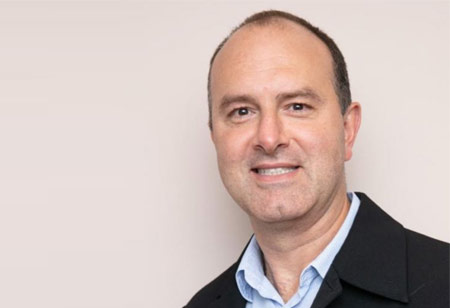Thank you for Subscribing to Healthcare Business Review Weekly Brief

Revolutionizing Healthcare through Innovative Precision Solutions
Healthcare Business Review
Roberto Caldeira Cury is a distinguished figure in the field of medical leadership and diagnostic innovation, boasting over a decade of transformative contributions. Currently serving as Executive Medical Director at Dasa, he plays a pivotal role in medical domains, including imaging, pathology, genetics, and clinical analysis, propelling the frontier of cutting-edge diagnostics. With a rich history of executive roles at Dasa and a profound dedication to shaping Latin America's medical landscape, Cury's expertise extends notably into cardiology, which is evident through his various leadership positions and the founding of Virtual Core. As CEO of Virtual Heart, he masters teleradiology specialized in Cardiovascular Imaging, showcasing his relentless drive for innovation and excellence in healthcare management.
Could you detail your roles and responsibilities within your organization and provide insight into your day-to-day tasks and duties?
As a cardiologist with over two decades of experience in healthcare, including eight years as an Executive Medical Director at Dasa, I oversee medical operations across radiology, diagnostic imaging, genetics, pathology, and clinical analysis in Latin America, including Argentina, Uruguay, and Brazil. My primary responsibility is to maintain medical excellence, quality, and patient safety within the diagnostic business unit of Dasa. Over the past three years, Dasa has expanded its scope, incorporating a hospital business unit with 16 hospitals and over 1000 outpatient facilities specializing in medical diagnostics.
In my day-to-day role, I ensure the highest quality, excellence, and patient safety standards across our diagnostic operations. I focus on operational efficiency to reduce healthcare spending and medical loss, driving medical efficiency through collaboration with technical, biomedical, and engineering teams to maintain radiology equipment. Additionally, I lead discussions on developing new business models that prioritize value-based healthcare and innovative care coordination approaches, addressing challenges in diagnostic medicine in Brazil.
How do you foresee the evolution of healthcare, especially in diagnostic medicine and cardiology, and what strategies do you plan to address emerging challenges in the field?
In the post-COVID era, a critical challenge lies in bridging the diagnostic screening gap and enhancing care coordination, particularly for oncology and cardiology patients.
Our goal is to embrace precision medicine, tailoring treatments at individual rather than collective levels and involving patients in decision-making alongside healthcare providers and payers
Over the past four years, especially during the peak of the pandemic, our focus has been on minimizing the interval between diagnosis and therapy, aiming for early and cautious interventions to improve patient outcomes and reduce mortality rates. This era demands a digital transformation with a data-driven mindset, emphasizing the importance of accurate data for precise diagnoses. Our goal is to embrace precision medicine, tailoring treatments at individual rather than collective levels and involving patients in decision-making alongside healthcare providers and payers. This approach seeks to empower patients and optimize the quality of life in the post-COVID healthcare landscape.
What upcoming technologies do you see influencing diagnostic medicine and cardiology in healthcare in the next 18 to 24 months?
Over the next two years, technological advancements, particularly the emergence of larger language models like Google Bard and ChatGPT, are expected to play a pivotal role. Anticipated impacts include increased automation, particularly in robotic and process automation, to enhance medical productivity. Leveraging large language models is a crucial strategy in transforming digital processes within the medical field, promising significant advancements in efficiency and productivity.
What would be your piece of advice for your fellow peers and colleagues?
I give three crucial insights to my fellow healthcare professionals: Firstly, prioritize technology validation by forming an AI team dedicated to thoroughly assessing all AI solutions, large language models, and process automation within the patient population. This ensures utmost patient safety and guards against any potential harm.
Secondly, center your efforts on operational efficiency to curtail healthcare costs, steering clear of solutions that inflate expenses without tangible benefits. This will secure the sustainability of the healthcare market amid uncertain reimbursement structures.
Lastly, articulate a compelling value proposition for technology adoption, transcending mere cost-cutting to forge new, value-based healthcare paradigms. By harnessing technology and data, we can realize the promise of precision medicine while addressing broader societal and environmental imperatives like emissions reduction, supporting socio-medical initiatives, and championing paperless strategies to preserve our planet's resources and combat deforestation.









